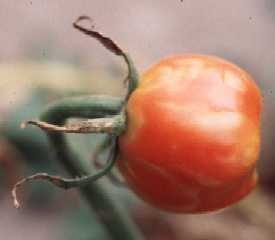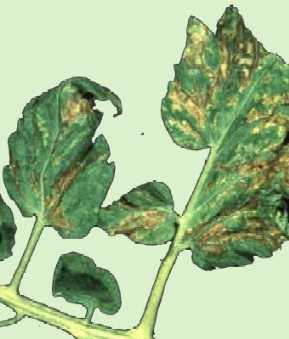Tomato Spotted Wilt Virus
 Causal Agent
Causal Agent
Tomato Spotted Wilt Virus and Impatiens Necrotic Spot Virus. The viruses are spread from infected to healthy plants by several species of thrips.
Hosts
Impatiens and gloxinia in greenhouses; tomato and pepper vegetable crops.
Symptoms

Control
Control of TSW centers on exclusion of the viruses from transplant production systems and on establishing field plantings with healthy transplants. Avoid producing vegetable transplants in a greenhouse where ornamentals have been imported or are being vegetatively propagated. Enclosing greenhouse windows with fine-meshed screening can help reduce the movement of thrips into a greenhouse. Inspect incoming plants, especially ornamentals, for virus symptoms and thrips infestations. Remove and destroy any symptomatic plants. Controlling thrips with insecticides, particularly in the field, usually does not reduce disease because thrips are able to infect plants before the chemicals can act to kill them. An intensive thrip management program in conjunction with other control tactics, may be more effective in a closed greenhouse system. Resistant tomato varieties adapted to Oklahoma are not currently available, but are being developed. Please contact your local county extension office for current information.

